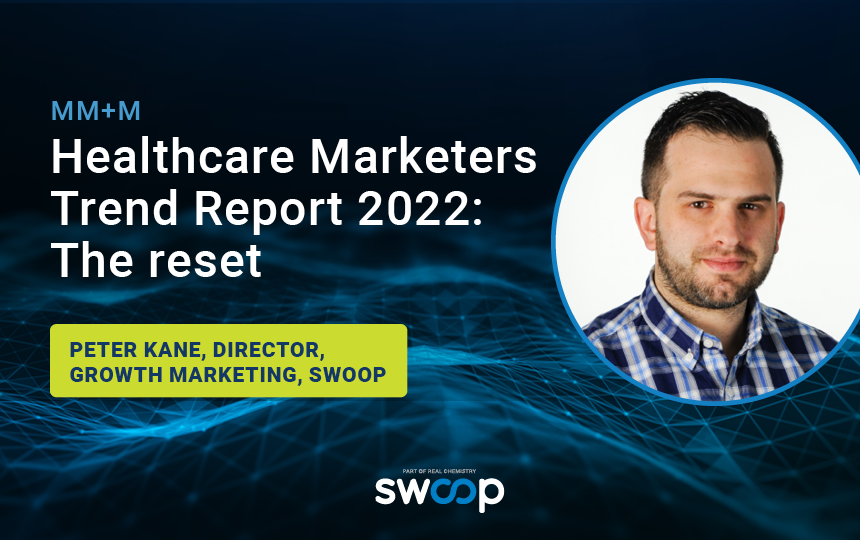MM&M’s Healthcare Marketers Trend Report 2022
By: [email protected], Content Manager, Swoop/IPM.ai
The medical marketing landscape has undergone seismic changes this year, not only because of continued uncertainty caused by the pandemic but because of major shifts in privacy. MM+M’s annual Healthcare Marketers Survey quantifies some of the biggest trends affecting the industry and what that means for marketers going forward.
Marketing budgets were up 15% in 2021 to $8.3 million on average, however, this still lags behind 2019 by about 34%. This indicates medical marketers must continue finding value in their spend; leveraging audiences is the best way to maximize tight budgets.
DTC patient advertising increased from 28.5% in 2020 to 31.0% in 2021, while HCP advertising decreased from 55.6% to 52.6% of budget.
Sales rep budgets continue to trend downward, while NPP and DTC advertising through digital channels is seeing an increased share of the marketing mix. Social, SEO/SEM and paid digital all saw budget increases of more than 28% on average, with social seeing more than a 36% bump in 2021. This means it’s going to be critical for marketers to better optimize these growth channels.
Despite the increase in social, as Swoop’s growth marketing director [email protected] explains, there remains an “underappreciation of privacy, both as a challenge to navigate and an opportunity to think differently about targeting.” Respondents ranked privacy 14th on their list of challenges even amid a rapidly changing ecosystem thanks to Apple, Facebook and Google. These platforms have updated policies and deprecated the ability to use online/clickstream data for targeting in the process.
“Marketers need to understand there are steps they can take to get ahead of these shifts to both mitigate risk and optimize marketing outcomes,” he continues.
To get ahead of this, Kane recommends taking action. “First, I’m making sure my data vendors are NAI-compliant, which assures patient privacy beyond HIPAA-certification. Second, I’m moving on from targeting through demographic and online data to privacy-safe offline health data. There are always going to be changes in the privacy landscape, but these steps can reduce exposure while also enhancing audience quality (AQ), which leads to better engagement and, ultimately, script lift.”
With only about 1/3 of respondents claiming they currently use custom audiences, now is the time for savvy marketers to turn to offline real world health data to build brand-exclusive segments that can be activated and measured across all channels.
By turning to a custom-built “Audience of Record” with higher AQ than those built through online behavior data or demographic data, healthcare marketers can protect their brands from privacy risks, limit the impact of platform-driven changes and, most importantly, reach the right patients in the right moment of their healthcare journey.
About the Author
Content Manager


